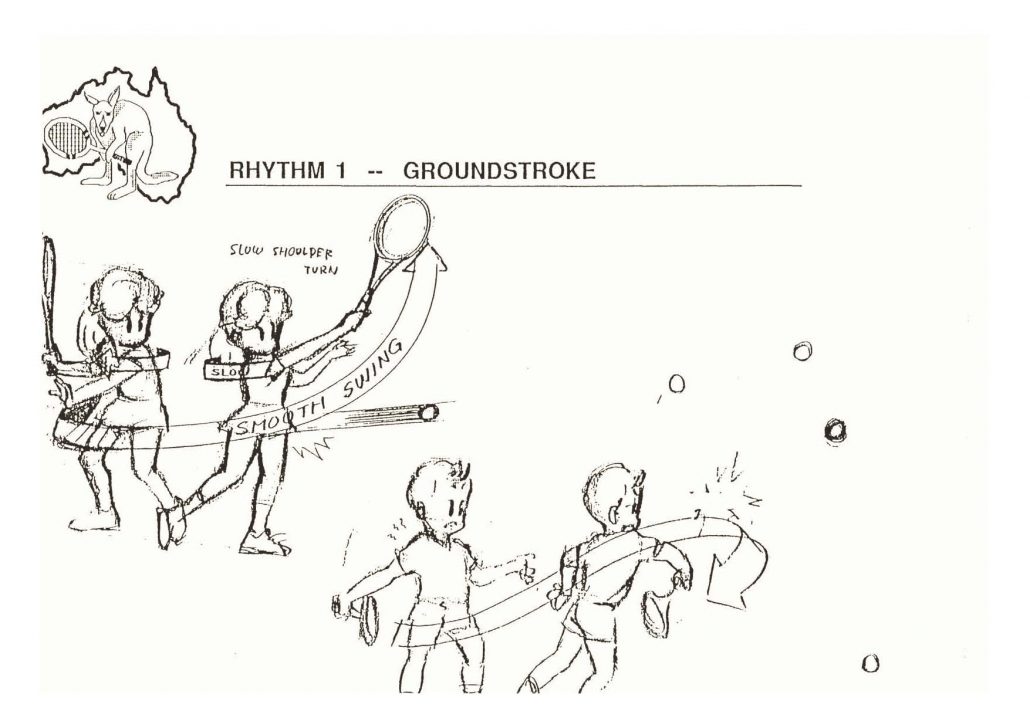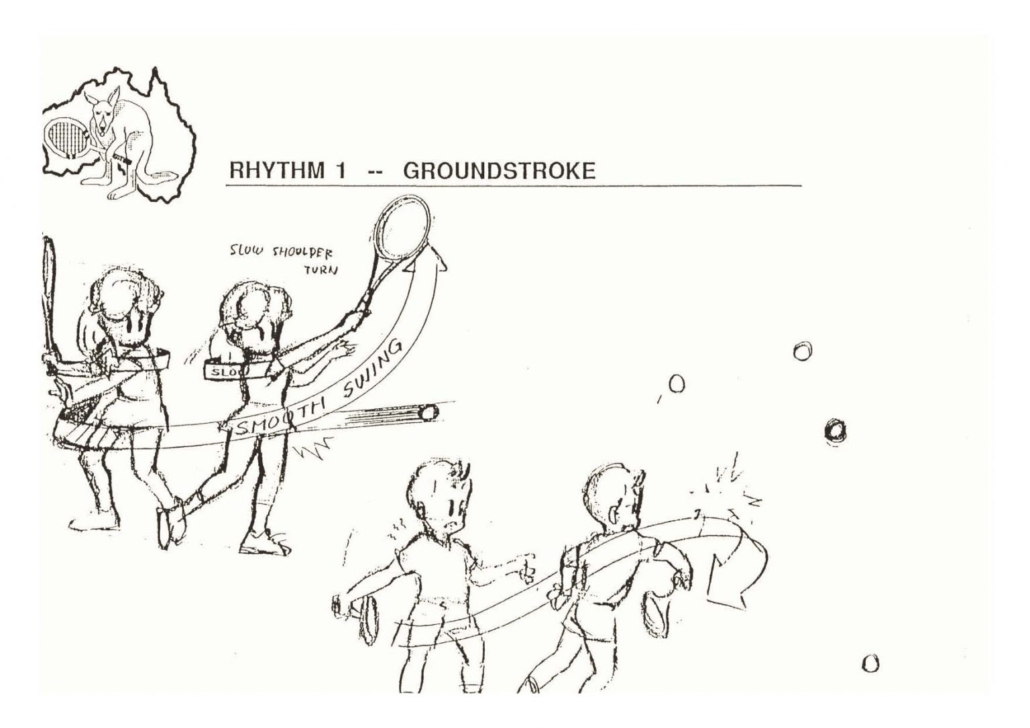RHYTHM: THIRD KEY ELEMENT
Rhythm plays a crucial role in ensuring that the body weight is effectively transferred into the shot. The weight of a tennis racket typically ranges from 250 to 320 grams, and the goal is to transfer the weight of the body (in kilograms) into the ball.
To avoid getting tennis elbow, players should avoid fast arm-only swings and instead focus on achieving the right rhythm and transferring their body weight into the shot.
The effect of racket head speed varies depending on the shot being played. For ground strokes, a smooth, one-speed swing is generally recommended. For the service, two speeds are ideal. When it comes to volleys, players should accelerate the racket head speed to effectively catch the ball.
The speed of the ball also plays a significant role in tennis. Faster balls are easier to hit due to the relative angle of the ball bounce from the court, while slower balls require more precise timing and early preparation. High bouncing balls, particularly lobs above shoulder height, are the most challenging to return for the typical club player.
Other factors that affect a player’s performance on the court include the court surface, ball type, and playing conditions. Proper racket stringing also plays a role in mitigating tennis elbow. By taking these factors into account and focusing on rhythm, weight transfer, and shot technique, players can improve their game and reduce their risk of injury.


(C) MUIR TENNIS ACADEMY 2010-2024

